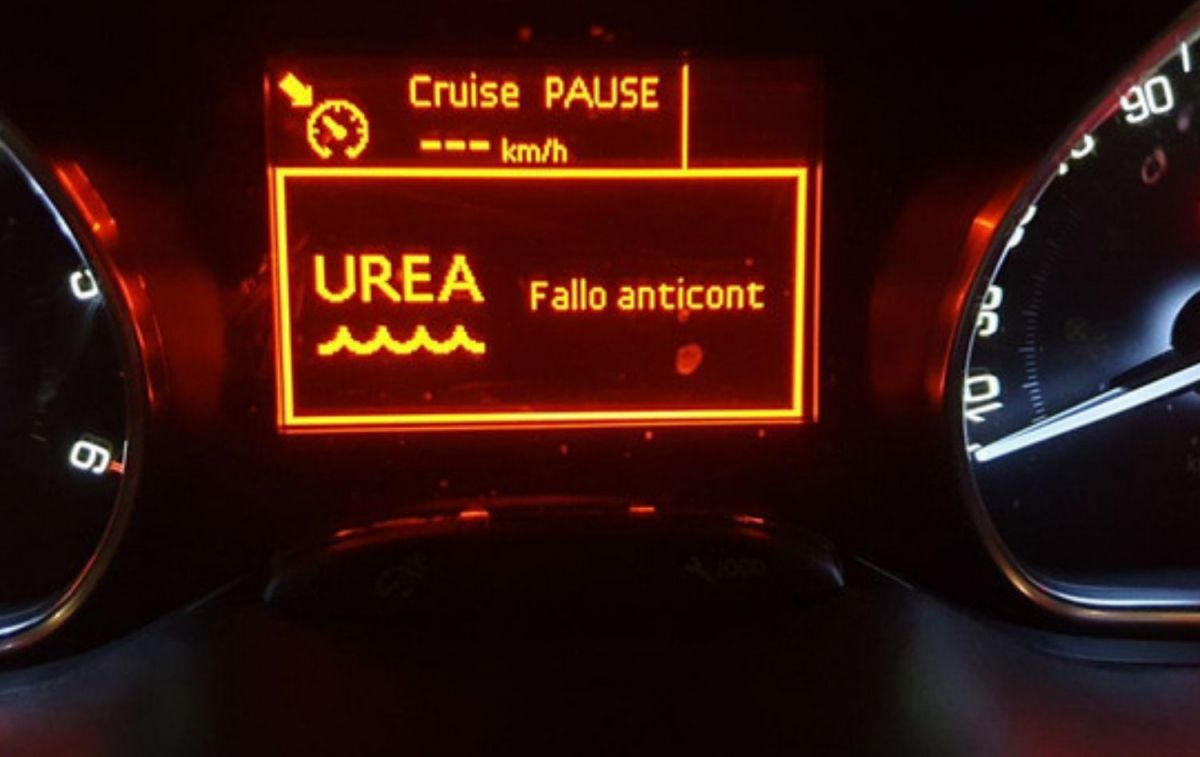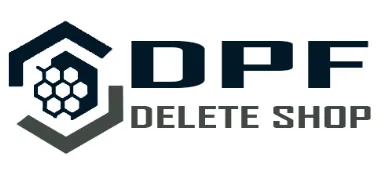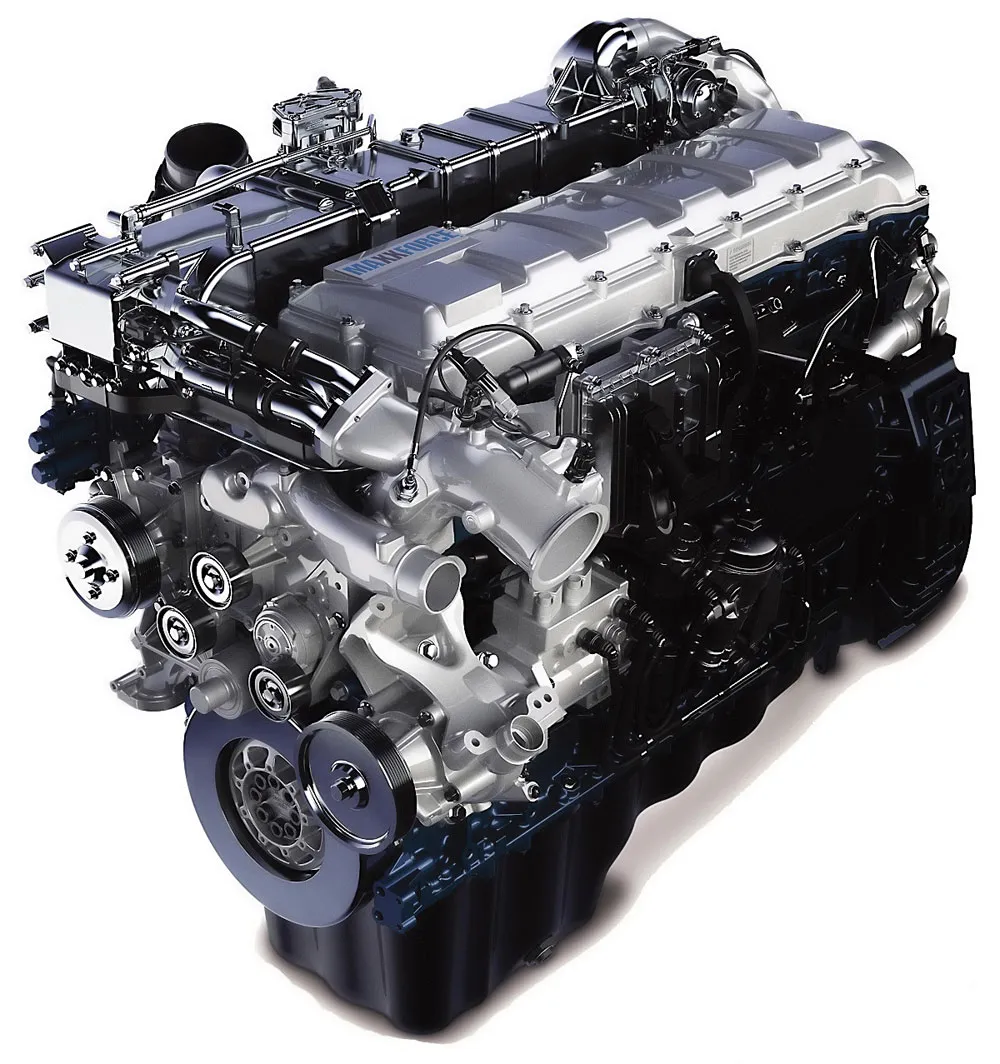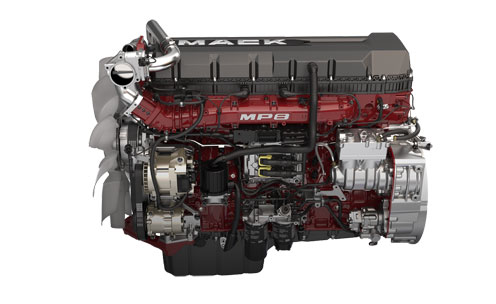DEF FLUID DELETE: REMOVAL SERVICE IN DIESEL HEAVY TRUCKS
24/7 CUSTOMER SUPPORT
24/7 CUSTOMER SUPPORT
DEF DELETE ON DIESEL HEAVY TRUCKS
DEF DELETE PROGRAMMING
What is a DEF delete and How Does It Work?
DEF delete, a type of diesel delete, involves disabling the SCR and related components. This is done to improve engine performance, eliminate the need for DEF fluid, and eliminate DEF(diesel exhaust fluid)-related problems. To remove the DEF system, the ECM (engine control module) is reprogrammed to disable the DEF sensors, resulting in the engine running without relying on the DEF system for emissions control.
At DPF Delete Shop, our DEF delete process is performed remotely by using Team Viewer to access your computer and reprogram your truck’s ECM. This means that regardless of your location, we can safely and effectively remove your DEF system and related components, making it easy for you to completely delete DEF-related problems.
DEF TUNING ON DIESEL TRUCKS
TUNING IN CUMMINS ENGINES
Here you can see the options in DPF, EGR, DEF removal for cummins brand engines: ISX, ISM, ISB, ISC, ISL, QSB, QSL, QSX, QSC
TUNING IN PACCAR ENGINES
Here you can see the options in DPF, EGR, DEF delete for Paccar brand engines: MX13, PX6, PX7, PX8, PX9
TUNING IN MAXXFORCE ENGINES
Here you can see the options in DPF, EGR, DEF removal for maxxforce brand engines
TUNING IN DETROIT ENGINES
Here you can see the options in DPF, EGR, DEF delete DETROIT DIESEL brand engines: DD13, DD15, DD16, SERIES 60.
TUNING IN VOLVO ENGINES
Here you can see the options in DPF, EGR, DEF DELETE VOLVO brand engines: D11 D12 D13 D16.
TUNING IN MACK ENGINES
Here you can see the options in DPF, EGR, DEF DELETE MACK brand engines: MP7 MP8 MP10.
DPF | EGR | SCR Delete Service Enquiry
support@dpf-deleteshop.com
Store Hours
M-F: 8am – 5pm
S-S: 9am – 4pm
+51960362662
Location
LIMA,PERU
Benefits of a DEF Delete for Diesel Engines
At DPF Delete Shop, we have helped numerous diesel truck owners improve the performance of their vehicles by removing the DEF EGR DPF. Whether you drive a Freightliner Cascadia, Kenworth, Volvo, International, or Peterbilt, etc. Delete the DEF system significantly improves the performance, fuel efficiency, and longevity of your engine. Here are the top benefits of delete DEF:
1. Increased power and performance of the diesel engine
The DEF system introduces limitations to the engine’s performance because it restricts the engine’s exhaust flow and forces it to operate under emissions-compliant parameters. By performing a DEF delete, you remove these limitations. By removing the DEF system, the engine can operate at higher temperatures, which helps in burning fuel more efficiently and enhancing overall performance. With no DEF fluid injections or SCR system altering the engine’s processes, your engine can perform at its full potential, producing more horsepower, better torque, and improved throttle response. This is especially beneficial for trucks that need maximum power to haul heavy loads.
Many diesel truck owners report a noticeable increase in power and smoother operation after completing the DEF flush. This is especially true for commercial vehicles such as Cummins, Mack, Western Star and Peterbilt, Volvo, International, where improved performance is key to operational efficiency.
3. Reduced maintenance costs on diesel trucks
DEF system maintenance is costly and time-consuming. Components such as the DEF tank, AdBlue DEF injector, and SCR catalyst eventually become clogged and fail, leading to costly repairs and extended downtime. Components such as the DEF tank, AdBlue DEF injector, and diesel particulate filter eventually become clogged and fail, leading to costly repairs and extended downtime. Trucks also require periodic top-ups of AdBlue fluid to ensure the SCR system is functioning properly. A DEF flush completely eliminates these maintenance needs.
By removing the system, you no longer have to worry about issues such as DEF injector failure, DEF crystal buildup, or low-quality DEF fluid causing damage to your engine. At , we disable all related sensors and programming in the ECM, preventing DEF related error codes from appearing.
2. Improves fuel efficiency in diesel engines
One of the key benefits of deleting the DEF system is the significant improvement in fuel economy. Maintaining the DEF system can lead to poor fuel efficiency as the engine burns additional fuel to heat the exhaust for the SCR reactions. The DEF system requires the engine to burn additional fuel to heat the exhaust for the SCR reactions. By removing this system, your truck consumes less fuel, increasing your miles per gallon (MPG) and lowering overall fuel costs. The savings can be substantial, especially for vehicles that travel long distances or operate under heavy loads.
In addition to eliminating the need to purchase DEF fluid, it reduces fuel consumption, which is a major factor in why so many truck owners opt to delete DEF for trucks. Improved fuel economy translates directly into cost savings, making it a smart investment for fleet owners and independent operators alike.
4. Longer diesel engine life
An overlooked benefit of eliminating DEF is the positive impact on overall engine health. The DEF system, along with the EGR system, adds additional complexity to the engine, as there are more parts that are prone to failure and require maintenance.
If the DEF system is no longer putting additional stress on the engine, it can run more smoothly and at optimal temperatures, reducing wear and tear on the engine. This ultimately leads to longer engine life, saving us money on repairs and replacements in the long run.
How to Perform a DEF Delete: Step-by-Step Process
At DPF Delete Shop , we’ve streamlined the DEF delete process to make it as easy and convenient as possible for our clients. Here’s a breakdown of how we perform a DEF delete:
Step 1: Diagnostics and Assessment
Using Team Viewer, we remotely connect to your computer, which will be linked to your truck ECM, to perform a comprehensive diagnostic assessment. This allows us to identify any existing issues related to the DPF, DEF, SCR or other emissions components, so that the delete process can be tailored to your vehicle’s needs.
Step 2: Disabling the DEF System
Once the diagnostics are complete, we begin the process of disabling the DEF system. This involves reprogramming the ECM to stop requiring DEF fluid injections and bypassing the SCR system. Additionally, we ensure that the DEF-related sensors are disabled, preventing any warning lights or fauld codes from being triggered.
Step 3: Custom Calibration and Tuning
After the DEF system is disabled, we perform custom tuning to optimize your engine’s performance. This may include increasing horsepower, improving fuel efficiency, and fine-tuning throttle response. Each calibration is tailored specifically to your truck model, ensuring that your engine runs at its best.
Step 4: Fauld Code Clearing and Testing
Finally, we delete all DEF EGR DPF -related fauld codes from the ECM and conduct thorough testing to ensure that your truck is running smoothly without any issues. At DPF Delete Shop, we pride ourselves on delivering a seamless experience, complete with ongoing support to ensure your satisfaction.
Remap SCR,DEF
How Much Does a DEF Delete Cost?
-
The cost of DEF delete can vary depending on your truck model, the type of tune-up required, such as DPF or EGR . At DPF Delete Shop, we offer customized services tailored to your vehicle’s specific needs. Full Delete Package (DEF, DPF, EGR) – For truck owners looking to remove all emissions-related systems, reprogramming of the ECM, and delete of related fault codes.
We offer a comprehensive delete package that includes delete of the DEF, DPF, and EGR systems. This full package typically costs between $600-$1,000 depending on the complexity of the job and engine model. While a DEF delete represents a significant upfront investment, the long-term savings in fuel, maintenance, and improved engine reliability often make it a worthwhile decision for truck owners.
Additionally, with fewer breakdowns and extended engine life, you can expect your truck to stay on the road longer, delivering higher returns on your investment.
Are you ready to unlock the full potential of your diesel truck by removing the DEF system? At , we specialize in performing DEF delete, DPF delete, and EGR delete remotely for trucks of all makes and models, including Freightliner , Peterbilt , International , Kenworth, and more.
DPF | EGR | SCR Delete Service Enquiry
Is It Illegal to Remove the DEF System?
The DEF system, commonly referred to as AdBlue in Europe, is an integral part of modern diesel engines. Its primary role is to reduce harmful nitrogen oxide (NOx) emissions through the Selective Catalytic Reduction (SCR) process. DEF (Diesel Exhaust Fluid) is injected into the exhaust gases, converting harmful NOx emissions into nitrogen and water vapor, which are much safer for the environment.
However, many truck owners wonder: “Is it illegal to remove the DEF system?” In countries such as the United States, Canada, and much of Europe, removing the DEF (diesel exhaust fluid) system from a vehicle that operates on public roads is illegal and violates strict emissions standards. Trucks are required to maintain emissions control devices like DEF, and SCR to meet environmental regulations. Failure to comply can lead to hefty fines, penalties, and the potential voiding of truck warranties.
That being said, DEF delete is a common practice in off-road vehicles, racing vehicles, and in regions with more lenient emissions laws. If you’re considering removing your DEF system, it’s essential to understand the legal ramifications in your area. At DPF Delete Shop, we specialize in DEF EGR DPF delete services for off-road vehicles and trucks used in private environments, providing a way to improve engine performance.


Why choose to delete DEF for your truck?
-
Improved performance in diesel engines:
Removing the DEF system truck unleashes the full potential of the engine, giving increased power and torque, which is very essential for trucks carrying heavy loads. Many diesel owners opt for modifications like DPF delete to enhance performance and fuel economy, especially for heavy-duty tasks such as towing.
-
Fuel savings on diesel trucks:
By eliminating the DEF system, your truck will have better fuel economy and savings over time.
-
No more DEF fluid:
Forget the hassle of refilling AdBlue fluid and the associated costs. Deleting DEF eliminates this recurring expense making it economical to operate.
Many truck owners also ask, “what is AdBlue delete?” Essentially, AdBlue delete is another term for DEF delete, as both processes involve disabling the AdBlue fluid injection system used in diesel engines to reduce emissions. Whether you refer to it as DEF delete or AdBlue delete, the end result is the same: better engine performance, lower fuel costs, and fewer maintenance headaches.

SCR SYSTEM PROBLEMS ON DIESEL TRUCKS
The Selective Catalytic Reduction (SCR) system is an emissions control technology that works in conjunction with the to reduce harmful nitrogen oxide (NOx) emissions in diesel trucks. While this system is essential to meeting stringent environmental regulations, it often presents a variety of mechanical and operational problems for diesel truck owners. At DPF Delete Shop, we frequently encounter trucks with SCR system problems and offer solutions to remove these systems so that truck performance can improve.
Below are some common problems associated with the SCR system in diesel trucks:
SCR Catalyst Clogging:
One of the most common problems with the SCR system is a clogged catalyst. The SCR catalyst is responsible for facilitating the chemical reactions that convert NOx into nitrogen and water vapor. The SCR catalyst captures soot, ash, and other particulate matter, which can build up and cause blockages over time. Over time, soot, ash, and other particulate can build DEF Injector Failures on the catalyst, causing blockages that reduce the efficiency of the system.
When the SCR catalyst becomes clogged, the system can no longer properly treat exhaust gases, resulting in increased emissions. Additionally, a clogged SCR system can cause the engine to go into “limp mode,” causing significant performance reductions. Cleaning or replacing the SCR catalyst can be costly, and recurring clogging issues can lead to extended downtime for your truck.
SCR System-Related Warning Lights:
The SCR system is equipped with a variety of sensors to monitor its performance, including NOx sensors, blue def diesel exhaust fluid level sensors, and temperature sensors. The SCR system, along with the exhaust gas recirculation system, is equipped with a variety of sensors to monitor its performance. When any of these sensors detect a problem, they trigger warning lights on your truck’s dashboard. These warning lights cause stress for drivers and lead to costly service visits to diagnose and fix the problem.
In many cases, the problem may be as simple as a faulty sensor, but it can still result in extended downtime. At DPF Delete Shop, we offer definitive solutions that include disabling these sensors and removing the SCR system, so you don’t have to deal with false alarms or unnecessary trips to the mechanic.
Clogged dosing valve:
The dosing valve can become clogged with dirt or other contaminants, which can prevent the reducing agent from being injected into the exhaust stream.
DEF Injector Failures:
The injector is a critical component of the SCR system, responsible for injecting DEF fluid into the exhaust stream. The DEF injector works in conjunction with the catalytic converter to reduce NOx emissions. This fluid mixes with the exhaust gases to trigger the chemical reaction necessary for NOx reduction. However, DEF injectors are prone to failure, often due to blockages caused by crystallized DEF fluid or contaminants in the fluid.
When the DEF injector fails, it leads to poor emissions performance, reduced truck engine power, and increased fuel consumption. Replacing a DEF injector is expensive, and frequent failures significantly impact your truck’s reliability.
we have helped countless truck owners fix these problems by removing the SCR system and bypassing the DEF injector. This solution not only eliminates the risk of injector failure, but also improves overall engine performance.
Defective reducing agent pump:
The pump that delivers the reducing agent to the dosing valve can fail, which can prevent the SCR system from functioning properly.
Defective dosing valve:
This valve is responsible for injecting the reducing agent (usually urea) into the exhaust stream. If it is not working properly, the SCR system will not function effectively.
DEF Quality Sensor Issues:
The DEF quality sensor monitors the purity and quality of the DEF fluid in the system. If the sensor detects poor quality DEF fluid, it can trigger warning lights or cause the engine to go into limp mode. Unfortunately, these sensors are known to malfunction, even when the DEF fluid is of acceptable quality.
A faulty DEF quality sensor results in unnecessary downtime while mechanics attempt to troubleshoot the problem. In many cases, the sensor needs to be replaced, which is time-consuming and costly. Repeated sensor problems cause frustration for truck owners who rely on their vehicles for daily operations.
High DEF Fluid Consumption:
Another common problem with SCR systems is excessive DEF fluid consumption. While DEF is relatively inexpensive, trucks that consume too much DEF fluid require constant refills, increasing operating costs. High DEF consumption is often a symptom of underlying problems within the SCR system, such as inefficient DEF injectors or malfunctioning sensors.
By performing a DEF flush, you can eliminate the need for adblue fluid altogether, thereby completely eliminating the problem of high consumption and reducing your truck’s overall operating costs.
Faulty wiring or connectors:
The SCR system relies on a complex network of wiring and connectors to function properly. If these become damaged or disconnected, the system may not work properly.

DEF DELETE KITS FOR TRUCKS
EF (Diesel Exhaust Fluid) delete kits are sets of parts and instructions that allow you to remove or bypass the DEF system from your truck’s engine. In addition to DEF delete kits, many truck owners also use DPF delete kits to remove the diesel particulate filter and enhance engine performance. The DEF system, also known as the selective catalytic reduction (SCR) system, is used to reduce the amount of nitrogen oxides (NOx) produced by the engine. It does this by injecting a solution of urea and water (DEF) into the exhaust stream, which converts the NOx into harmless nitrogen and water.
DEF delete kits are often used by truck owners who want to increase the horsepower and torque of their vehicles, or who are having problems with their SCR system. These kits usually include a pipe or other components that replace the SCR system, as well as any necessary mounting hardware and instructions. Some kits DEF delete may also include additional parts such as gaskets or mounting brackets.
It’s important to note that in some areas, it is illegal to delete or bypass the SCR system from a vehicle’s engine. If you are considering installing a DEF delete kit on your truck, it’s a good idea to check the laws in your area to ensure that you are not breaking any regulations. Additionally, removing the SCR system can significantly increase the emissions produced by your truck, which can have negative impacts on air quality.
How to Disable/Bypass the AdBlue System and Delete Software
What you will learn in this article:
What is the AdBlue system, and why is AdBlue used in diesel engines?
The AdBlue system is a critical part of the emissions system in diesel engines, designed to reduce NOx emissions.
How does the AdBlue system function?
How does AdBlue work to lower emissions?
What is the cost and usage of Diesel Engine Exhaust Fluid (DEF)?
How to Disable/Bypass the AdBlue System
The benefits and drawbacks of removing the AdBlue system
AdBlue system cleanup software

What exactly is the AdBlue System, and why is it used?
Diesel contains greater latent potential energy than gasoline, making it one of the most frequent fuels in automobiles, and diesel engines are among the most popular engines in the transportation business. However, diesel, like gasoline, emits a high level of pollution, raising environmental concerns. Several solutions have been developed to minimize these emissions, one of which is the Selective Catalytic Reduction system (SCR).
SCR is based on eliminating or lowering NOx emissions in the engine after fuel and air combustion, which is handled by AdBlue or DEF (Diesel Engine Exhaust Fluid) solutions. In actuality, SCR is the technology’s name, while AdBlue is the reaction’s catalyst solution. When the AdBlue system is deleted, the engine no longer relies on DEF fluid to reduce emissions, which can lead to increased performance but also higher pollutant levels. Catalysts, the AdBlue injector, the control system, and the AdBlue measurement/spray system are all general components of the SCR system.
What exactly is AdBlue and how does it work?
Most automobiles manufactured after 2015 are equipped with AdBlue, which is designed to meet Euro 5 and Euro 6 regulations while significantly reducing NOx emissions. Using AdBlue is mandatory in many regions to comply with emissions regulations, and failing to use it can lead to legal issues and fines. ADBLUE, also known as (DEF), is a colorless, odorless, and clear solution that is highly soluble in water and may be stored for up to 18 months if kept in ideal conditions, such as a dry area and at a cool temperature. Ammonia and carbon dioxide are heated with urea to produce ADBLUE.
This solution has a urea content of 32.5% and a deionized water content of 67.5%. The freezing temperature of AdBlue is -11 degrees Fahrenheit, however to avoid freezing below that temperature, a ceramic heater in its tank is heated when the engine is started, preventing the solution from freezing. EGR-equipped vehicles do not require AdBlue, whereas vehicles without EGR require AdBlue to aid in the NOx breakdown process.
Most automobiles have a separate tank for AdBlue, which is normally positioned adjacent to the gasoline tank or under the spare tires. It should be noted that AdBlue liquid should be stored in specific containers designed with cutting-edge technology. AdBlue cannot and should not be stored in any container.



AdBlue Reduces Emissions in What Way?
Because of the high temperature of the exhaust, the NOx concentration is more than what the catalyst can degrade into nitrogen and water, which is where AdBlue comes in. The AdBlue system is an integral part of the emission system in diesel engines, designed to reduce NOx emissions through a chemical reaction. In actuality, the AdBlue releases ammonia as a result of the gas temperature. The NOx-containing exhaust gases are then mixed with ammonia and delivered to particle filters and SCR. Ammonia, in reality, transforms NOx to water and nitrogen. Because the process solely regenerates NO and NO2, it is known as selective catalytic reduction. The needed ammonia in this process is pumped into the catalyst via a water and urea solution, emphasizing the importance of AdBlue.
AdBlue Consumption and Costs:
The quantity of AdBlue sprayed is governed by the amount of combustion-induced NOx emissions, which are measured by NOx sensors implanted before and after the catalyst, as well as the vehicle’s operating circumstances, such as engine RPM, exhaust gas pollution levels, and engine operating temperature. The exhaust gas recirculation system works in conjunction with the AdBlue system to reduce NOx emissions and improve fuel efficiency.
According to the explanations above, the capacity of the AdBlue reservoir is normally between 10 and 25 liters, and its use varies from around %2 to %6 of the volume of gasoline consumption. In other words, a gallon of AdBlue will go you between 2 and 3 thousand miles. AdBlue costs between £1 and £1.5 per liter, depending on whether you buy it from a gas station or a repair shop.
If the AdBlue bulb turns on in your automobile, it signifies you have around 3 liters of AdBlue left in your vehicle, which is adequate for about 1,200 kilometers. If you switch off the engine after these extra miles, and assuming your car has run out of AdBlue solution, you will not be able to restart it, and you need take your car to a repair shop. If the engine runs out of AdBlue while in motion, failure to cut off the engine results in power loss.
How to Disable/Bypass the AdBlue System:
Using an emulator as a non-software AdBlue removal approach caused several issues, some of which were noticed in other automobiles, including the Mercedes Sprinter. Some of the potential downsides of this strategy are listed below:
Many electrical problems in the automobile
Power system noise in a vehicle
If the police discover out, you will be penalized.
The removal of AdBlue cancels the vehicle’s warranty.
High price
As a result, DEF delete through software within the ECU is preferable than the emulation technique.

The Benefits of AdBlue,DEF Delete :
DEF Delete enhances engine respiratory efficiency since the presence of AdBlue reduces smoke emission. The AdBlue system is one of several emissions systems designed to reduce NOx emissions and improve air quality.
Unlike previous approaches, DEF delete software disables all pertinent sensors’ data.
DEF Delete is cost-effective since you will not need to refill the AdBlue tank indefinitely.
If there are problems in the AdBlue system, you will have to spend a lot of money on repairs, sometimes as much as £5-6,000, but eliminating AdBlue with software can save you these expensive charges.
The error light will no longer be illuminated after using the software DEF Delete.
DISCLAIMER FOR OFF-HIGHWAY TUNING
DPF Delete Shop informs you of the following:
It is important to note that off-highway tuning, including DPF delete programming, is illegal in some areas and can void the manufacturer’s warranty. Off-highway tuning refers to modifications made to a vehicle that are not intended for use on public roads.
By installing off-highway tuning products, you are assuming all liability for the use of the vehicle and any resulting damages or injuries. These modifications may not comply with the laws and regulations in your area, and you could be subject to fines and penalties if caught using the vehicle on public roads.
Off-highway tuning products are intended for closed-course racing or off-road use only and are not legal for use on public roads. It is your responsibility to ensure that you are using these products in compliance with all applicable laws and regulations.
+51960362662
Location
LIMA,PERU
support@dpf-deleteshop.com
Store Hours
M-F: 8am – 5pm
S-S: 9am – 4pm
DPF | EGR | SCR Delete Service Enquiry
DPF Delete Shop
About Us
Disclaimer
Terms & Conditions
Links
Services
Privacy Policy
FAQs
Contact
support@dpf-deleteshop.com
+51960362662
PAYMENT AND SUPPORT









